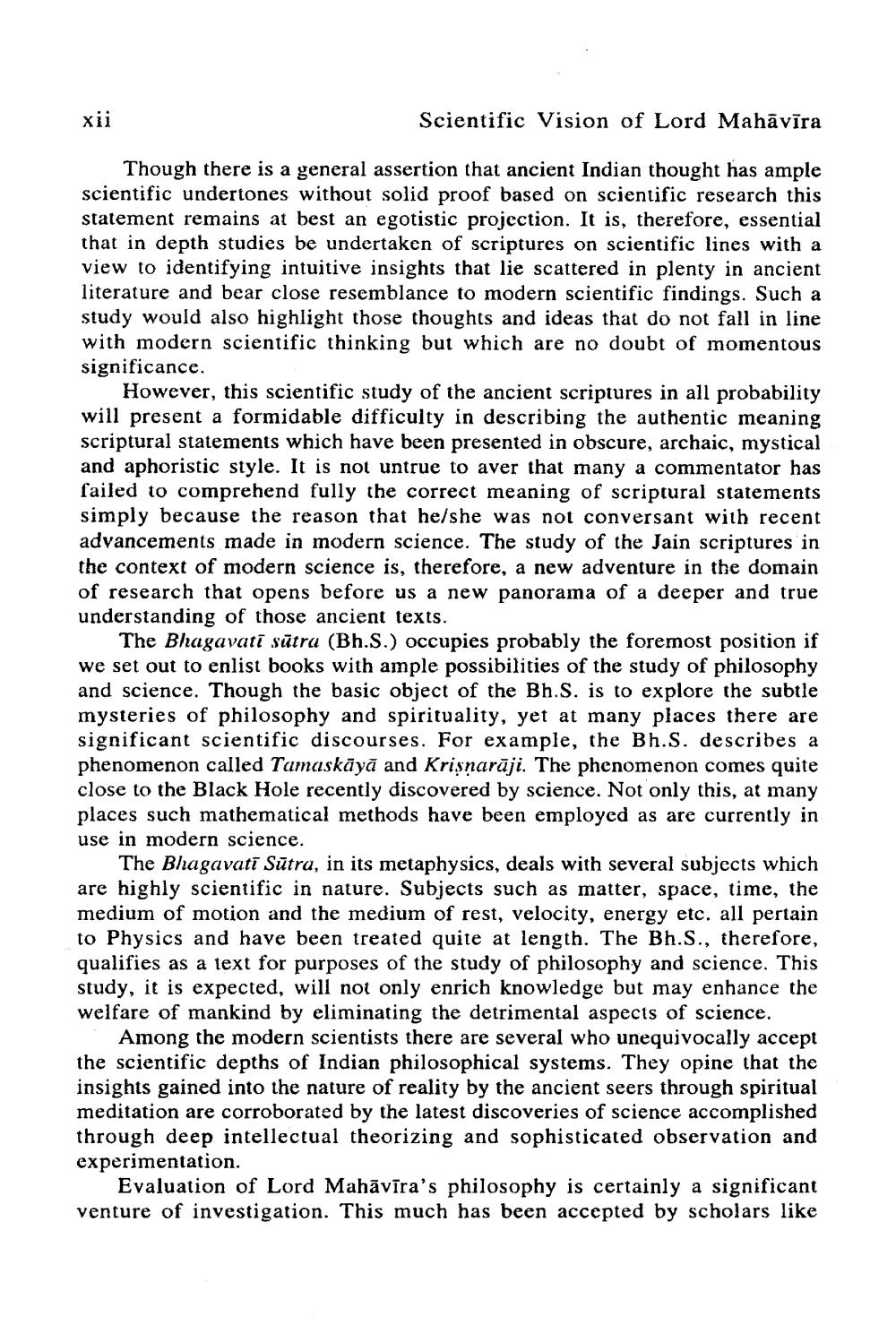________________
xii
Scientific Vision of Lord Mahāvīra
Though there is a general assertion that ancient Indian thought has ample scientific undertones without solid proof based on scientific research this statement remains at best an egotistic projection. It is, therefore, essential that in depth studies be undertaken of scriptures on scientific lines with a view to identifying intuitive insights that lie scattered in plenty in ancient literature and bear close resemblance to modern scientific findings. Such a study would also highlight those thoughts and ideas that do not fall in line with modern scientific thinking but which are no doubt of momentous significance.
However, this scientific study of the ancient scriptures in all probability will present a formidable difficulty in describing the authentic meaning scriptural statements which have been presented in obscure, archaic, mystical and aphoristic style. It is not untrue to aver that many a commentator has failed to comprehend fully the correct meaning of scriptural statements simply because the reason that he/she was not conversant with recent advancements made in modern science. The study of the Jain scriptures in the context of modern science is, therefore, a new adventure in the domain of research that opens before us a new panorama of a deeper and true understanding of those ancient texts.
The Bhagavati sūtru (Bh.S.) occupies probably the foremost position if we set out to enlist books with ample possibilities of the study of philosophy and science. Though the basic object of the Bh.S. is to explore the subtle mysteries of philosophy and spirituality, yet at many places there are significant scientific discourses. For example, the Bh.S. describes a phenomenon called Tamaskāyā and Krisnarāji. The phenomenon comes quite close to the Black Hole recently discovered by science. Not only this, at many places such mathematical methods have been employed as are currently in use in modern science.
The Bhagavati Sūtra, in its metaphysics, deals with several subjects which are highly scientific in nature. Subjects such as matter, space, time, the medium of motion and the medium of rest, velocity, energy etc. all pertain to Physics and have been treated quite at length. The Bh.S., therefore, qualifies as a text for purposes of the study of philosophy and science. This study, it is expected, will not only enrich knowledge but may enhance the welfare of mankind by eliminating the detrimental aspects of science.
Among the modern scientists there are several who unequivocally accept the scientific depths of Indian philosophical systems. They opine that the insights gained into the nature of reality by the ancient seers through spiritual meditation are corroborated by the latest discoveries of science accomplished through deep intellectual theorizing and sophisticated observation and experimentation.
Evaluation of Lord Mahāvīra's philosophy is certainly a significant venture of investigation. This much has been accepted by scholars like




